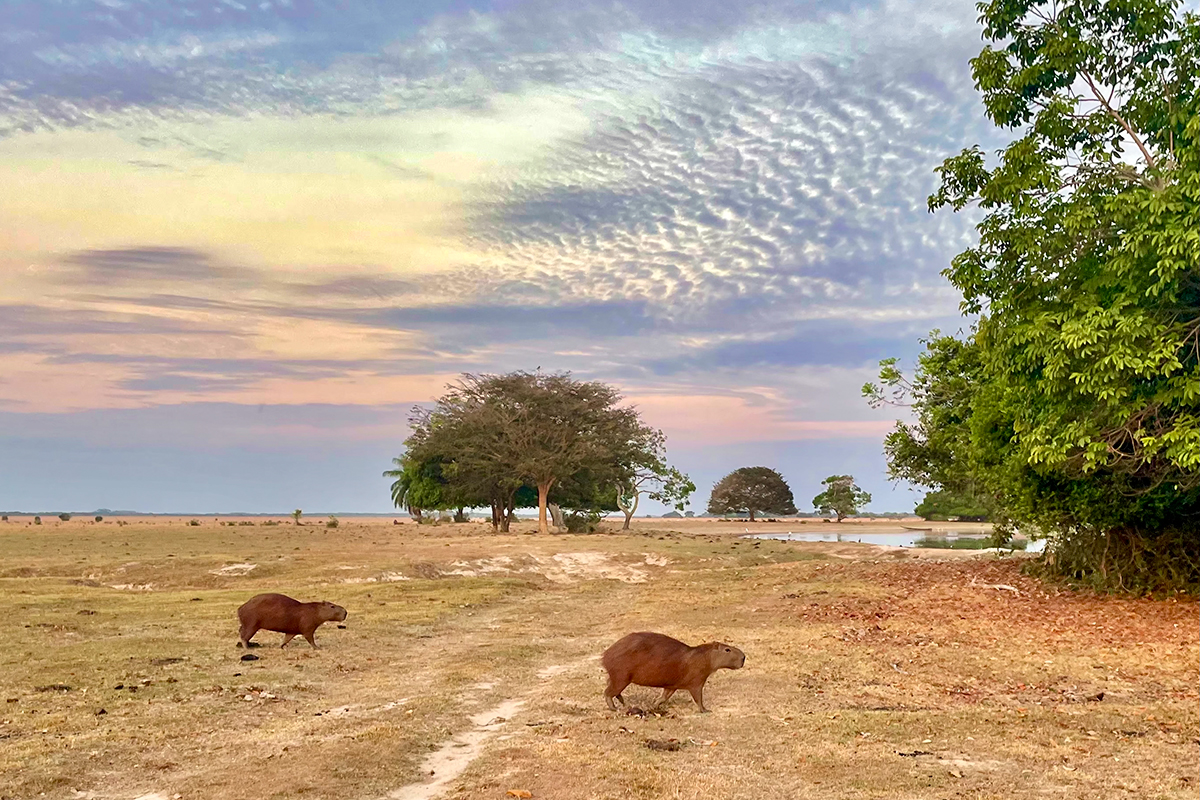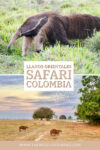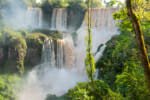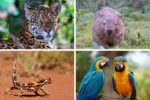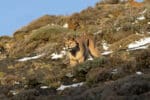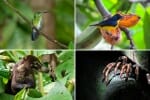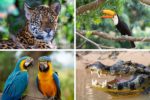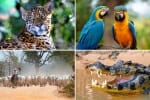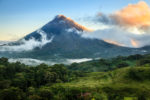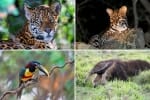You’ve probably heard of going on a wildlife safari on the plains of Africa, but did you know you can also go on a wildlife safari on the plains of Colombia?
The Llanos Orientales are a wide tract of rolling parries that stretch between the Andes Mountains and the Amazon Rainforest. Many species that call the Amazon home also roam north along the plains which gives visitors ample opportunities to see them in the wild in the more open terrain compared to the dense jungle.
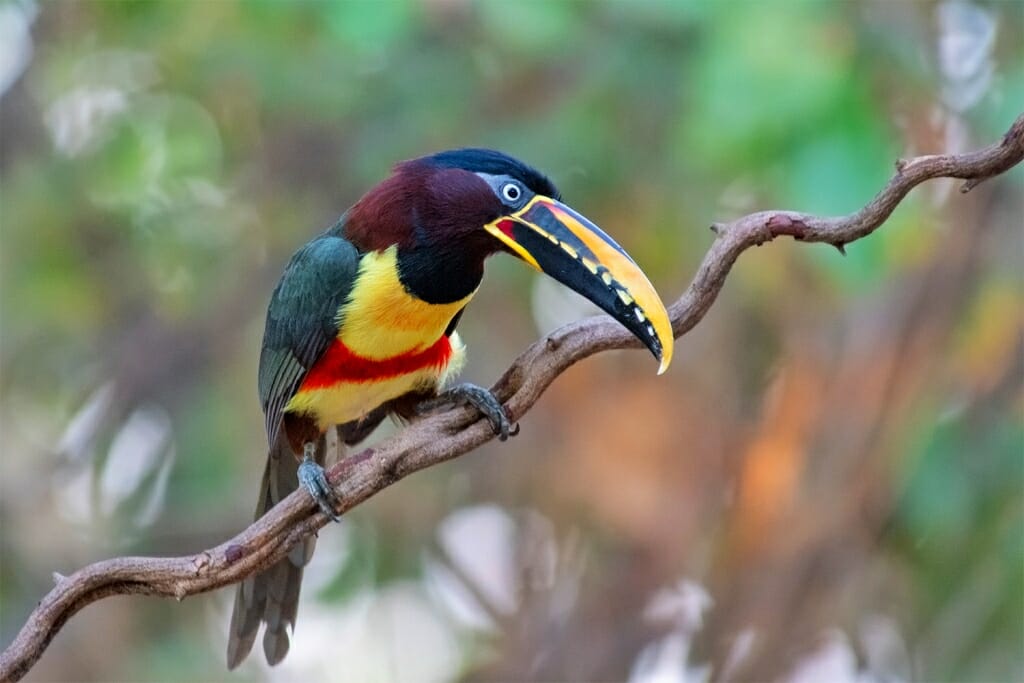
While you won’t see lions, wildebeest, or zebras at Llanos Orientales, you’ll definitely get to see capybaras, deer, and many species of birds. With some luck, you may even spot an anaconda or jaguar – the only big cat in the Americas. You can also experience the unique cowboy culture of the plains, even choosing to do your safari by horseback.
This lesser-known destination in Colombia is truly unique and should be on the list of places to go for any wildlife lover. In this post, you can learn all about how to do a wildlife safari on the plains of Colombia.
Where are the Llanos Orientales?
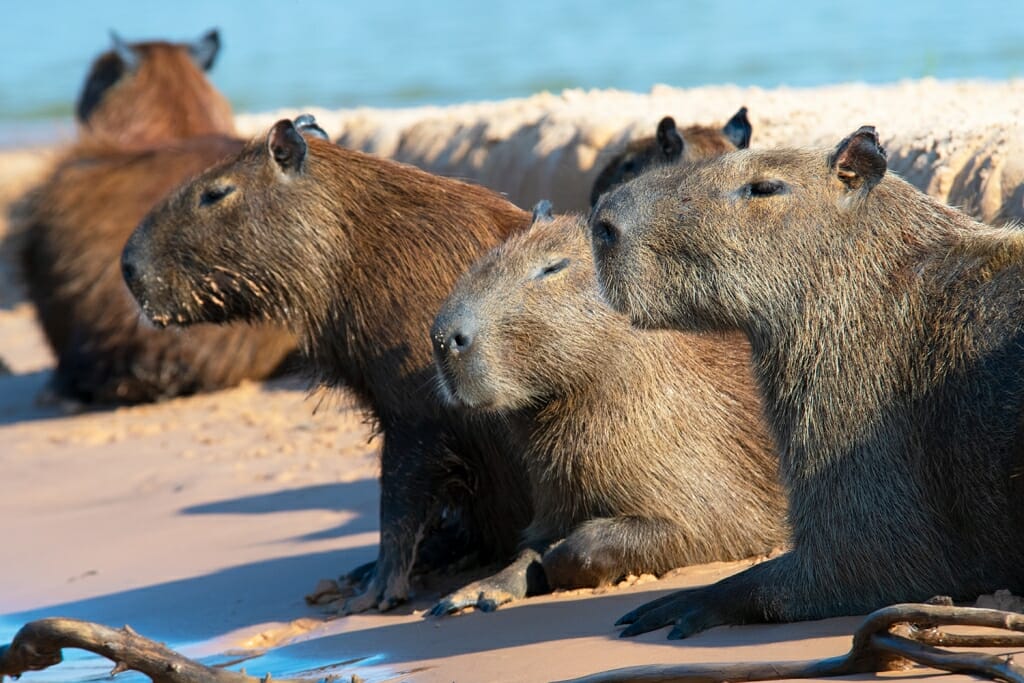
Llanos Orientales, or Eastern Plains, are located in the central, eastern part of Colombia, south of Bogotá and the Andes mountains. They actually stretch all the way into Venezuela.
To the south, they are bordered by the outskirts of the Amazon Rainforest and border the Orinoco River basin near the border with Venezuela, where you’ll find jungle and the mystical Cerros de Mavecure hills.
The western sections of Colombia’s Llanos are characterized by rocky highlands and more forests. It’s in this area that you can find the magical Caño Cristales River, filled with colorful plants that don’t grow anywhere else in the world and give the river its nickname of the “Liquid Rainbow.” There are also amazing ancient caves with wall paintings and great hiking outside of the city of San José del Guaviare.
However, the best area for a wildlife safari in Colombia is on the central and eastern sections of the plains. This is where the open plains allow for lots of opportunities to see animals.
These areas are in the Colombian province, or department, of Casanare. The closest major city to the Eastern Plains is Yopal, and this is the best place to start your adventure out onto Los Llanos Orientales.
Yopal can be reached by plane or bus from Bogotá or the city of Villavicencio. It’s also possible to reach Yopal by bus from the province of Boyacá, passing through the Andes along the way.
Arranging Your Wildlife Safari on Colombia’s Eastern Plains
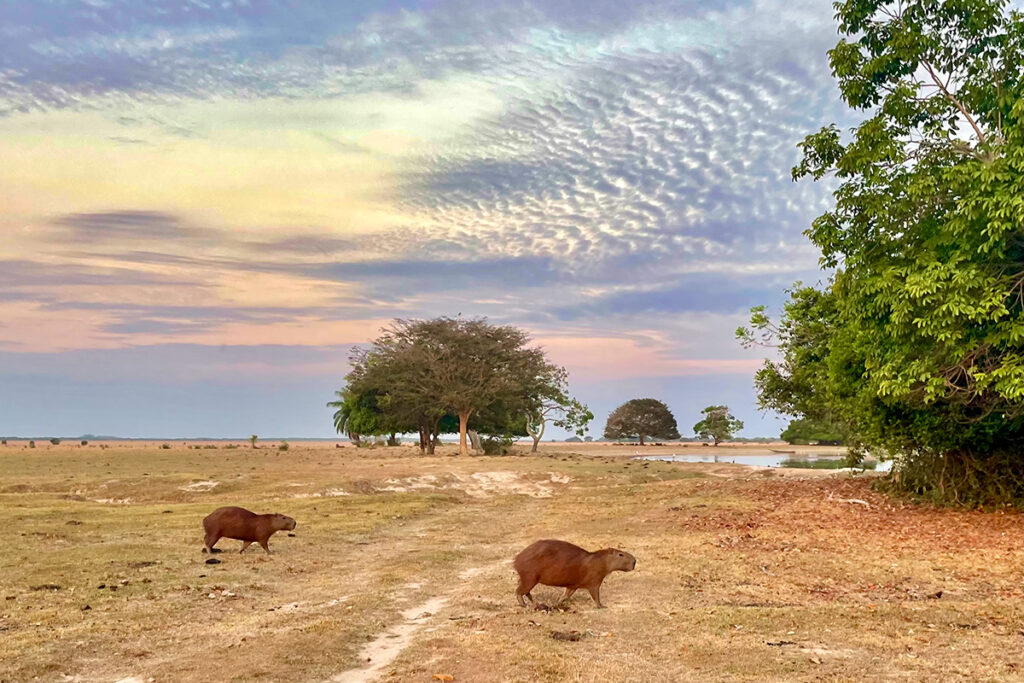
There are a few things worth doing in Yopal, such as watching the sunrise from the Mirador de la Virgen de Manare on the hill above town and taking in the views of the Andes from along the banks of the Rio Cravo Sur River.
However, you’ll need to get out of Yopal and out on the plains themselves to do your Colombian wildlife safari.
There are a few options for how to arrange your safari on the Llanos Orientales. First, you can choose to organize it directly with one of the wildlife reserves. Most of them double as cattle ranches and are commonly called hatos.
Some well-known hatos and reserves include El Encanto de Guanapalo, La Aurora, and San Pablo, but there are many more.
It’s worth pointing out that while cattle ranching has been responsible for much deforestation in the Amazon, the type of ranching practised here is still very traditional and not industrialized.
Ranchers lose cows to pumas and jaguars, for example, but rarely retaliate against the predators. It’s also on land that was always plains and not cleared forest. The marriage of this form of ranching and tourism helps keep this land protected as reserves and is a good example of sustainability.
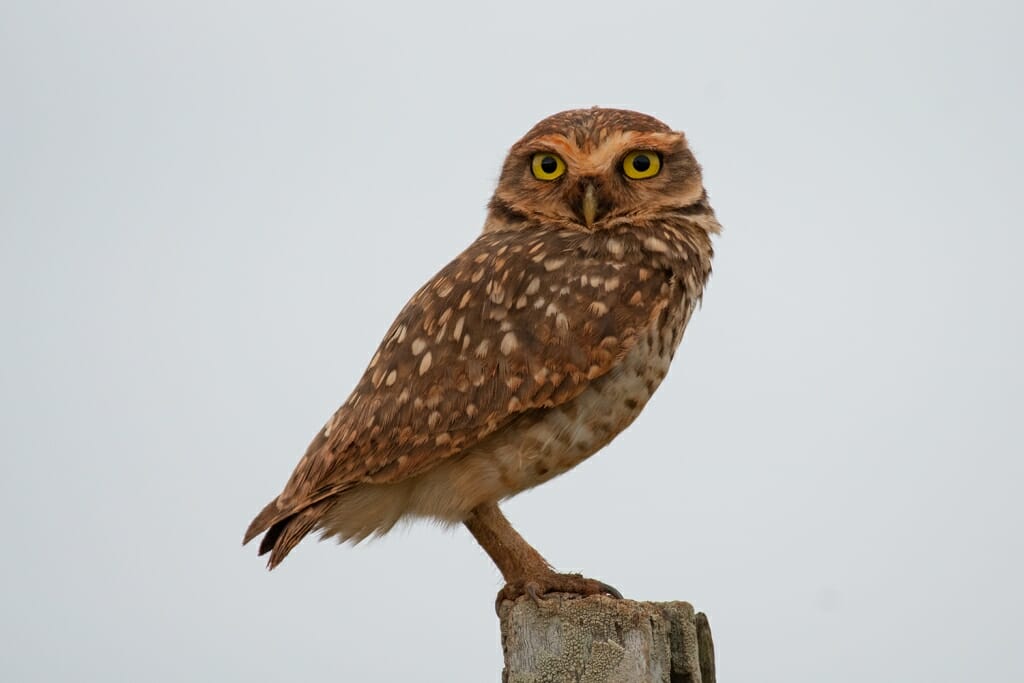
While it’s possible to do a safari as a day trip, especially to a hato relatively close to Yopal such as El Encanto de Guanapalo, you’ll get a lot more out of spending a couple of nights.
That will allow you to do multiple excursions to different areas and at different times of day, bettering your chances of seeing lots of animals. For example, early morning just before sunrise and just before sunset are great times to see animals. As an added bonus, the sunsets over Los Llanos Orientales are absolutely stunning!
Depending on what hato you go to in the llanos, it may also be possible to take small, single-engined aircraft from Villavicencio or Yopal, although traveling over land is much more affordable. Most hatos should have contacts for transportation out of Yopal.
You can also choose to arrange your wildlife safari with a travel agency. There are a number operating in Yopal. A well-regarded one is Wild Llanos.
While some tour packages only go to one hato, one of the advantages of organizing your safari with a travel agency is including visits to several hatos, maximizing your opportunities to see different animals, and spending multiple days traveling further away from Yopal, where you have a better chance of spotting the rarer and more difficult to find animals.
Animals of the Llanos Orientales
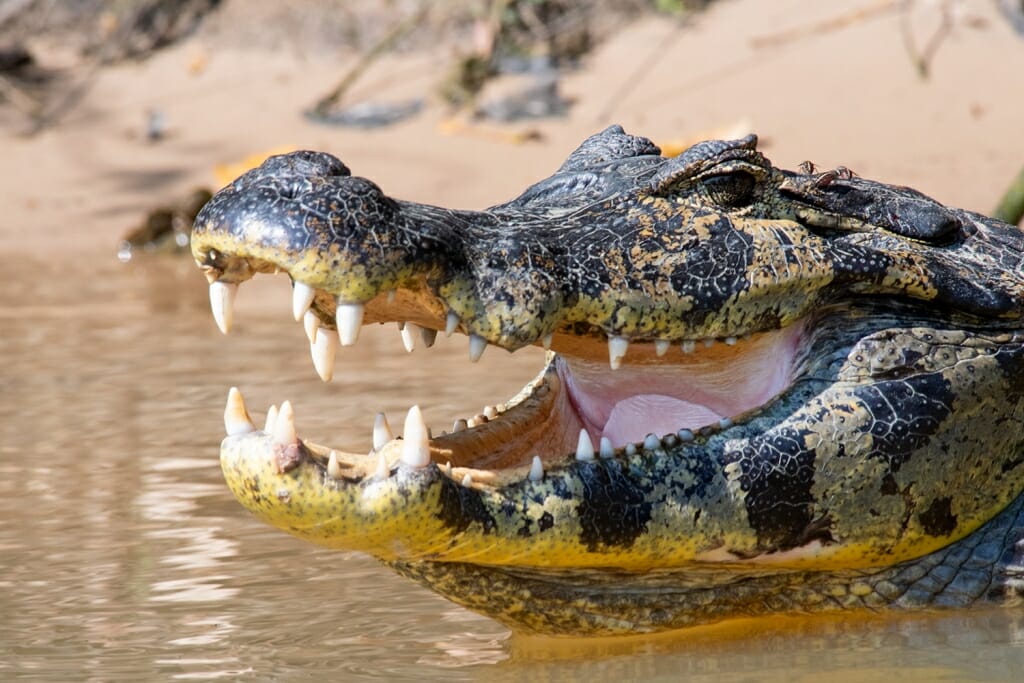
There are a variety of animals that call the Llanos Orientales home. Some are more elusive and difficult to spot, while others are so common you are all but guaranteed to see them.
The most common animals are capybaras, often called chiguiros by Colombians. These funny and cute animals are actually the largest rodent on earth. If you’re feeling a bit adventurous, capybara meat is served in many restaurants in this region of Colombia and is considered a local delicacy.
They are so ubiquitous on los llanos, that short distances are often measured by chiguiros rather than meters. In fact, signs up around Yopal during the times of social distancing encouraged people to maintain a distance of two capybaras!
So, you can count on seeing plenty of them during your safari. Be sure to look for them around lakes, ponds, and watering holes, as they are excellent swimmers.
Also around the watering holes, be on the lookout for caimans. Called babillas in Spanish, they are incredibly common, and especially during the dry season, easy to spot their many small heads floating and bobbing along the surface as the watering holes dry up.
Crocodiles also call the rivers of Casanare home. The Orinoco Crocodile is actually the largest crocodile in the world.
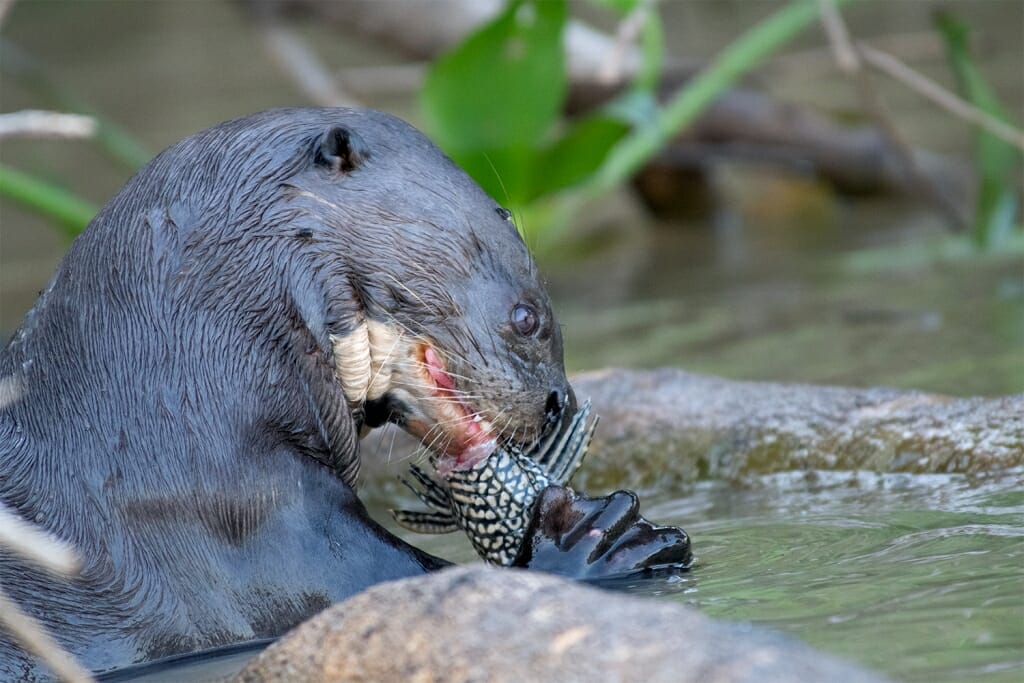
However, due to being hunted, they are critically endangered, and they are now extremely rare in the wild and very difficult to spot. There is a breeding and repopulation effort at Wisirare Park near the town of Orocue on the Meta River where visitors can see them, although it’s quite a ways off the beaten path.
Other common animals you are nearly guaranteed to see include white-tailed deer, turtles, and many species of birds. You can see most species of birds during the wet season when migratory birds like herons come to enjoy the flooded plains.
Some of the less common animals that are still fairly easy to spot include a crab-eating fox that looks almost more like a small dog, field owls, which you can see pop in and out of their little nests in the ground, and a few species of monkeys that can be found in the small clusters of trees and forests.
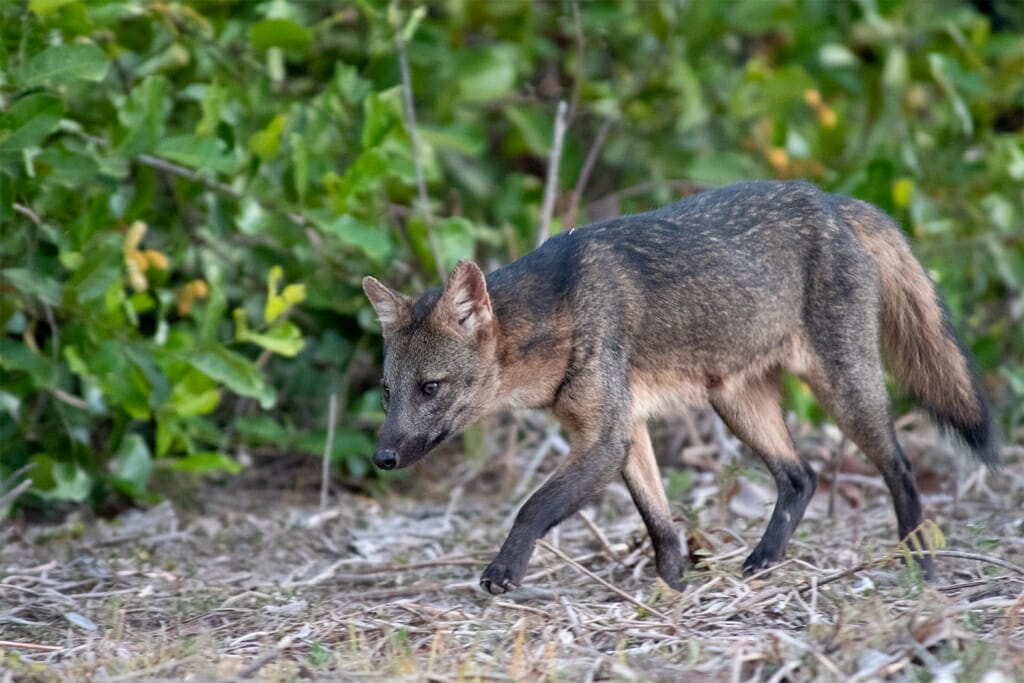
Two of the rarer animals that there are still pretty decent chances to see, especially during the dry season, are anacondas and the giant anteater. You have the best chances of seeing anacondas along the banks of rivers and ponds, where they can more easily grab a capybara, their favorite snack. Look for them especially where there are roots and tree branches in the water.
Meanwhile, the giant anteater is tough to spot because it has a large range, but it can be found wandering the plains. So, if one has been spotted or reported close by, there is a good chance of tracking it down.
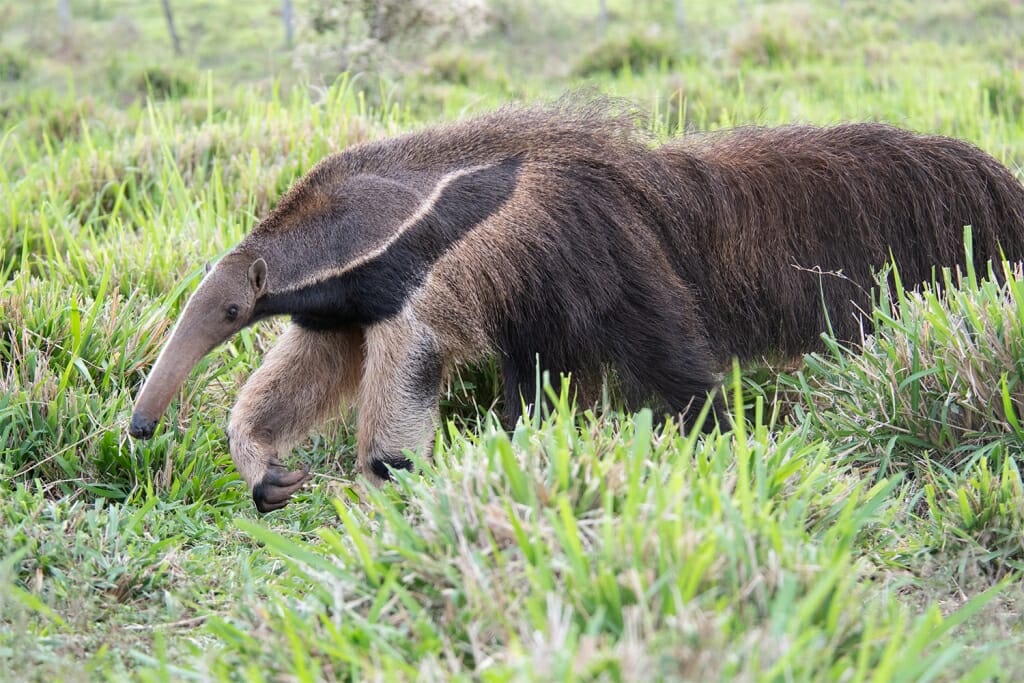
The two most elusive animals to spot are the apex predators of the Llanos Orientales, the puma and jaguar. Pumas are easier to spot than jaguars and during the dry season are known to be seen by some visitors.
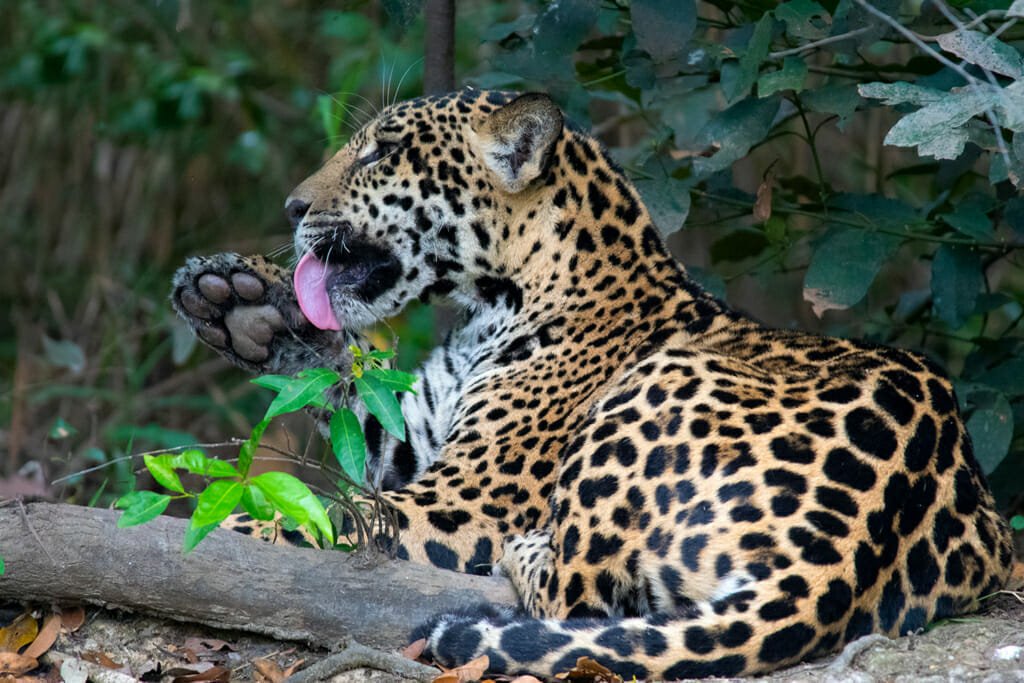
The jaguar though, such an expert in sneaking up on prey, is incredibly rare. There are better odds seeing them not only in the dry season but also the further southeast you go away from major population centers.
While they are very difficult to spot, there are always sightings reported every year, so with a good bit of luck, you might just see this majestic creature in the wild on a wildlife safari on Colombia’s eastern plains.
When to Visit Colombia’s Plains
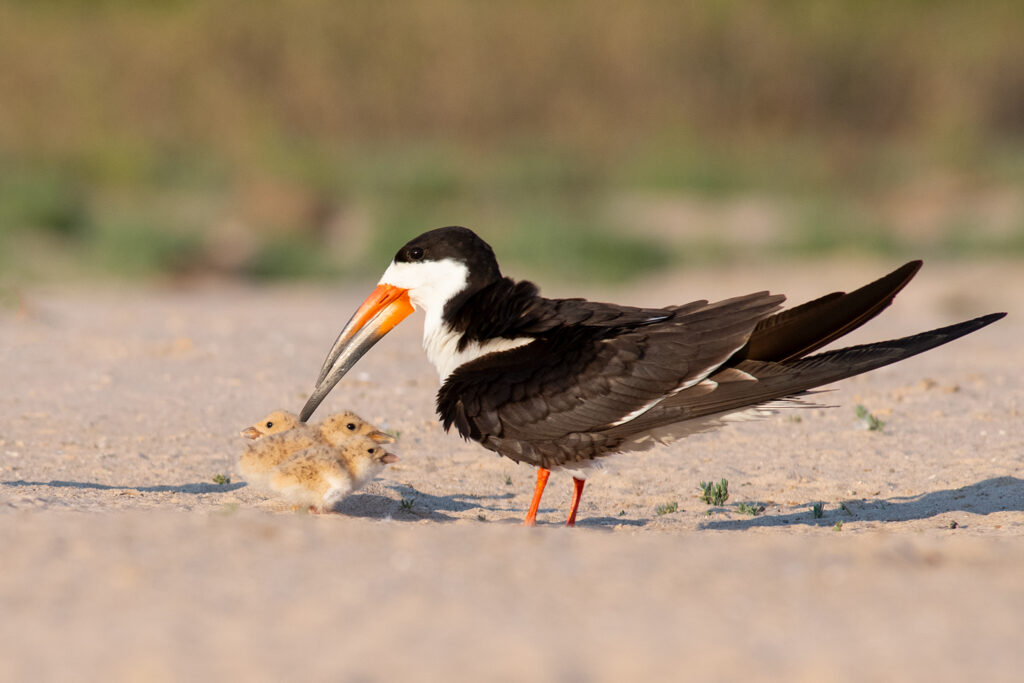
Speaking of seeing the rarer animals, it’s important to consider when you would like to visit Colombia’s plains.
On the one hand, the dry season, which runs from December to March, offers better chances to see the rarer animals. That’s because animals concentrate around the few remaining sources of drinking water and have much smaller ranges, making them easier to find and spot.
You can greatly increase your odds of seeing anacondas, giant anteaters, and even the elusive pumas and jaguars by visiting during the dry season.
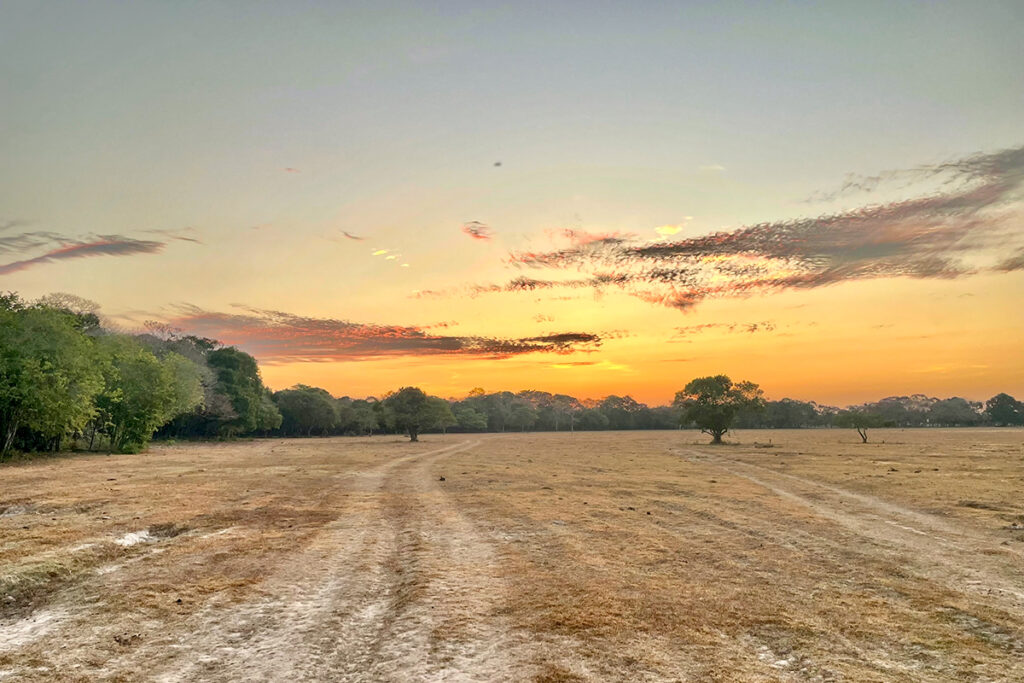
On the other hand, the scenery isn’t nearly as pretty during the dry season. The plains dry up and look brown and barren. In fact, the harsh summer and lack of water is a difficult time on many of the animals.
This contrasts with the rainy season, which runs from April to September. During this time, the frequent rains flood the plains, turning them into lush wetlands, teaming with green. Many migratory birds come during this period of the year, and you can also explore many areas in canoes. The sunsets this time of year are especially beautiful too.
Both times of year are good times to visit, depending on what you want. It might be harder to see the rarest animals during the wet season, but you’ll get to see many birds that aren’t present during the dry season. Meanwhile, you’ll increase your odds of seeing an anaconda, jaguar, or anteater during the dry season but be more limited in the number of activities you can do.
The transition season in October and November is the third option for a happy medium between the two seasons as well as the plains start to dry up but aren’t completely barren yet.
Closing Suggestions and Practical Tips
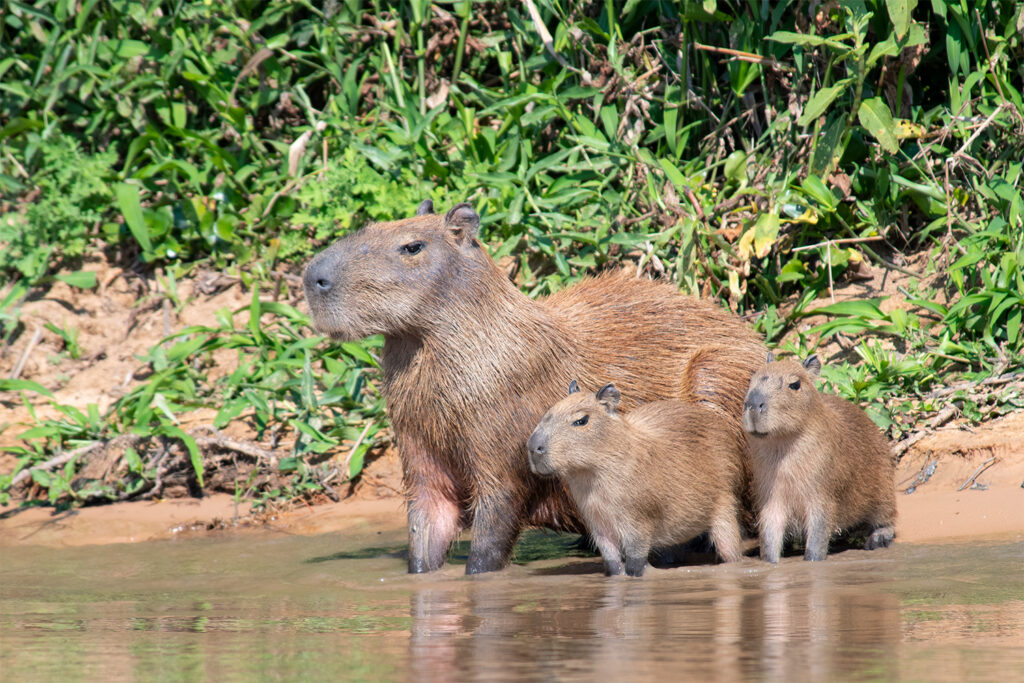
To conclude, here are some tips to keep in mind when planning your safari on Colombia’s Llano’s Orientales.
You can find ATMs in Yopal but not out on the llanos themselves, so you’ll want to make sure you have plenty of cash before you head out on the plains. Since there are no major population centers, you’ll also want to make sure you have plenty of any medications you take, hygiene products you use, and any special snacks you’ll want or need.
This is a tropical environment, so you’ll want plenty of sunscreen and bug spray with you. Especially during the rainy season, you’ll want to make sure you have rain gear, and even during the dry season, it’s not a bad idea to have a light jacket or sweater in case it gets a bit cooler at night.
While most hatos will probably have some available to borrow, some waterproof hiking boots or shoes will definitely be handy, especially if you want to look for anacondas.
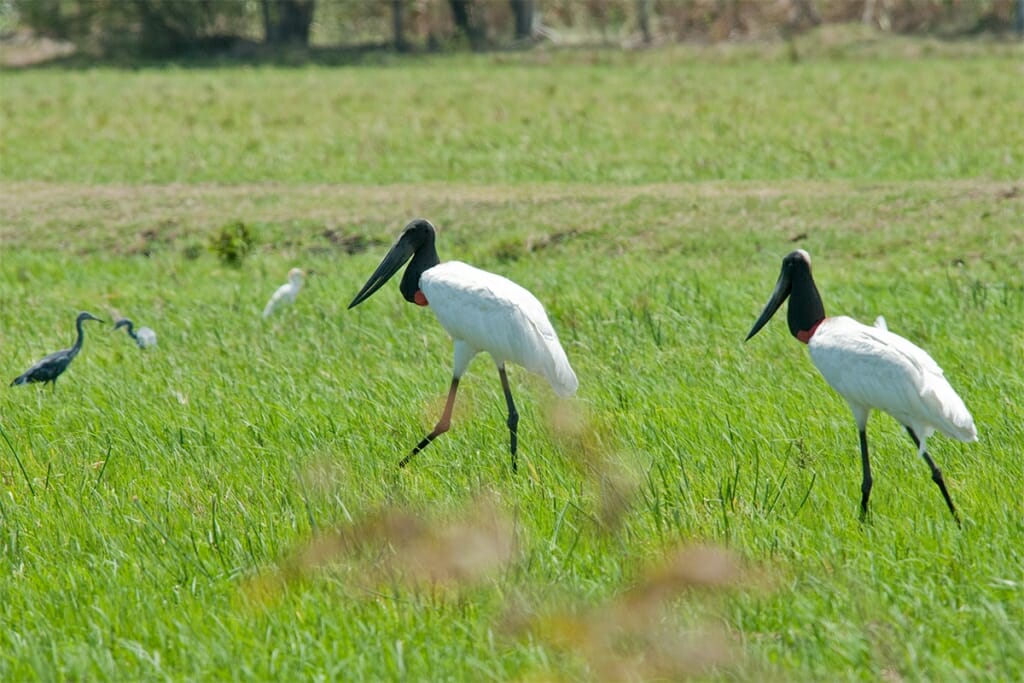
Most tours will include a combination of wildlife walks, horseback riding, rides on benches in the back of trucks, and small boats and canoes during the wet season. Walking and horseback give the advantage of being quieter and may let you get closer and see more animals, while it’s easier to cover more ground in a truck.
You shouldn’t be shy about saying you’re uncomfortable on horseback though, and your guides should plan activities that best fit what you want to do and see in addition to your comfort level.
Some hatos also offer the opportunity to participate in work around the ranch, from wrangling and corralling the cattle to milking the cows. So, if you ever wanted to pretend to be a cowboy, be sure to ask them about that when planning.
While there are a few nice hotels in Yopal, including the Hampton by Hilton, Estelar, and GHL. Accommodations out in the llanos are usually in ranch houses. They are comfortable but rustic. You should not expect luxury, air conditioning, free HBO, or blazing-fast wifi.
However, it’s a great chance to disconnect and enjoy a different lifestyle for a few days. Some hatos have campfires and music at night. Oh, and do be sure to try the delicious mamona llanera, the local favorite dish of slow-cooked smoked veal meat.
Now you know everything you need to know to plan your own safari on the llanos of Colombia. It’s a neat and unique addition to any Colombia itinerary and offers a terrific chance to see many animals in their natural habitats.
About the Author
Adam McConnaughhay from CartagenaExplorer.com lived in Cartagena, Colombia from 2011 to 2022 and got to travel extensively in Colombia, including visiting the Llanos Orientales in January 2022.
More Nature Adventures in Latin America
- A Practical Guide to Visiting Iguazu Falls in Brazil & Argentina
- When and Where to See Animals in the Wild: Guide to Wildlife Watching
- Guide to Planning Your Patagonia Puma Quest in Torres Del Paine
- Where to See Peninsula Valdes Orcas and Other Patagonian Wildlife
- Spotting Wildlife in Monteverde Cloud Forest Reserve, Costa Rica
- Best Galapagos Islands for Spotting Wildlife
- 35 Amazing Brazilian Animals and Best Places to See Wildlife in Brazil
- Top 10 Pantanal Adventures For Your Brazil Holidays
- 25 Landmarks in Costa Rica to Add to Your Bucket List
- Brazil Itinerary: watching wildlife in Brazil without breaking the budget

